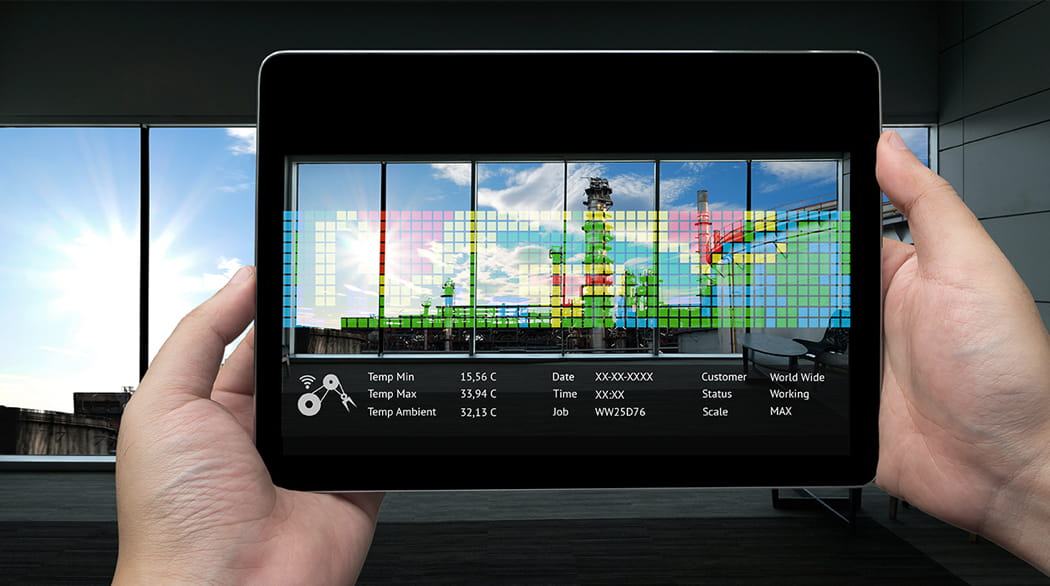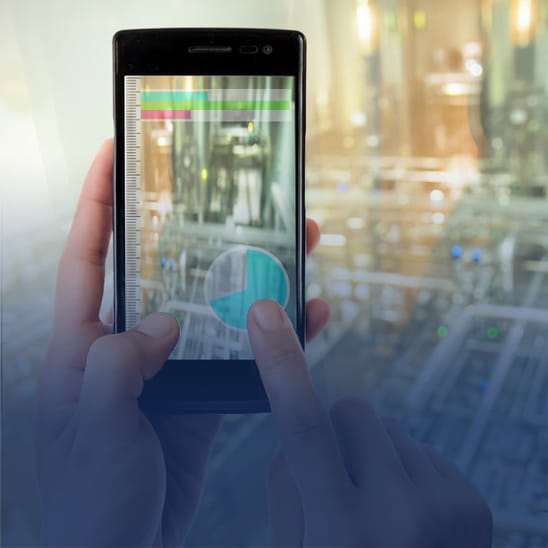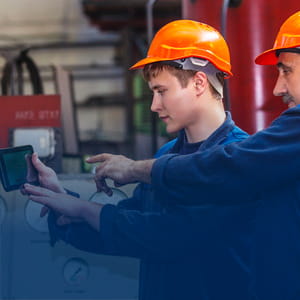
Augmented Reality Is
Reshaping the Way
We Do Things
Augmented Reality, or AR, enables us to experience our surroundings in new ways. It can also fundamentally change how we design, manufacture, operate and service products. As the technology increasingly augments our leisure and business activities, it is changing the way we interact with the world.
AR is a way of overlaying computer-generated virtual worlds onto the physical world to enhance our perceptions. Through AR, a layer of information can be generated by merely pointing your smartphone or tablet at an object. In a recent popular game, players hunt down virtual characters appearing before them in real time on smartphone screens. This has made AR more popular with the general public.
Moving from the world of games to applications that have a practical impact on people’s lives, one global technology company is working on ways to expand the world of AR in daily life. Just by pointing your smartphone at a household gas meter, you can instantly access information on use. This will allow you to control your gas usage to conserve energy efficiently. Or when you point your smartphone at a 2-D house plan, a 3-D model pops up, and you can then send that data to a 3-D printer. You could also use your smartphone to display products in 3-D from a 2-D catalog, and then place an order. Being able to observe products or objects in 3-D reality means being able to gather comprehensive information for making better purchasing decisions. This is merely the tip of the iceberg, as AR applications are truly endless and will bring convenience and knowledge to all aspects of life.
We are seeing an increase in the development of a technology that was once only a dream and is now quickly becoming reality.

Beyond consumer applications, AR will drive the future of industry
Technology company leaders believe that AR is the future and will be a huge market. Consequently they are starting to lay down the foundations that change the ways we conduct business and manufacturing. Industrial companies are experimenting with AR in inspection, logistics, building and operations. In manufacturing, companies are using AR to improve operations and efficiency. Enhancing a plant operator’s visual perception by using AR is just one example how manufacturers can be assisted in overcoming the challenges of transferring knowledge in an aging workforce. Improving safety is another area where AR will continue to play a role in eliminating accidents caused by human error.
One Japanese company is using AR along with wearable devices to improve the accuracy and quality of fieldwork. This is achieved by overlaying instructions and manuals needed for on-site operations. AR displayed information can tell the worker the precise sequence of tasks required, or indicate where hazardous chemicals are located for safer operations.
As the Internet of Things becomes increasingly widespread and the use of big data becomes more prevalent, applications for AR will continue to expand and play a greater role in the transformation of industry and life as we know it.


